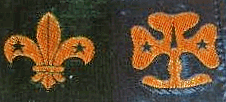SS Orduna
| 300px Tugboat pulling the SS Orduna to sea | |
| Career | |
|---|---|
| Name: | SS Orduna |
| Owner: | Pacific Steam Navigation Company |
| Operator: |
Cunard Line, Royal Mail Steam Packet Company, Pacific Steam Navigation Company |
| Port of registry: | Liverpool, 22x20px United Kingdom |
| Route: | North Atlantic service |
| Builder: | Harland and Wolff yards in Belfast |
| Launched: | 2 October 1913 |
| Maiden voyage: | 19 February 1914 |
| Out of service: | November, 1950 |
| Fate: | Scrapped, 1951, in Dalmuir, Scotland. |
| General characteristics | |
| Class and type: | Ocean liner |
| Tonnage: | 15,500 |
| Length: | 167.7 m (550 ft) |
| Beam: | 25.5 m (67 ft) |
| Propulsion: | Triple screw[1] |
| Capacity: | 896 passengers |
SS Orduna was an ocean liner built in 1913-14 by Harland & Wolff in Belfast for the Pacific Steam Navigation Company. After two voyages she was chartered to Cunard Line. In 1921 she went to the Royal Mail Steam Packet Company, then being resold to the PSNCo in 1926. Her sister ships were the RMSP Orbita and SS Orca.[2]
She provided transatlantic passenger transport, measured approximately 15,500 gross tons, and was 550.3 ft x 67.3 ft.[3]
Contents
History
First World War
Orduna was pressed into service as an auxiliary cruiser and troop transport in the First World War running from Halifax, Canada to Liverpool with notables such as Quentin Roosevelt on board.
In January 1915 Orduna rescued the Russian crew of the sailing ship Loch Torridon, which had sprung a leak while transporting timber off the west coast of Ireland.[4] Later in 1915, en-route for New York, Orduna was targeted by a U-boat. The torpedo failed to hit the ship, which arrived safely.
In 1918 Orduna collided with the 4,406 ton steamer Konkary, carrying a cargo of ballast from Queenstown to Trinidad. Konkary was lost in the accident.
Between the wars
In April 1923 she was involved in another rescue, transporting the crew of the barquentine Clitha, which had been abandoned and set on fire, to England after they had been rescued by the schooner Jean Campbell.
In 1925, Dean James E. Lough of the Extra-Mural Division of the New York University chartered Orduna for the transport of 213 students to France, with lectures taking place on board.[5]
In 1938 the Orduna was used for the third and final 'Peace Cruise', carrying 460 Scouters and Guiders, including Robert and Olave Baden-Powell, and their daughter Heather, on a cruise to Iceland, Norway, Denmark and Belgium. Orduna left Liverpool on 8 August, returning on 25 August via Dover.[6]
Robert Baden-Powell was too ill to leave the ship during the voyage, but parties of local Scouts visited him on the ship at most of the stops, while the Scouters and Guiders on the ship took the opportunity to tour local landmarks and attend receptions. During the stop at Reykjavik on Thursday, 11 August, during which Orduna moored beside the German cruiser Emden, a party from the Scouts of Iceland brought some rock on board so that Baden-Powell could still 'set foot in Iceland'.[7] The Orduna called at Trondheim, Norway, on 15 August, Copenhagen, Denmark on 18 August, and Belgium on Sunday 21 August, before returning to England.
Second World War
During the 1939 "Voyage of the Damned" affair, where German Jewish refugees were refused entry into Cuba, the United States and Canada, Orduna was refused permission to land 40 refugees at Havana.[8]
With the need for military transport in the Second World War, in 1941 she was put into service by the British government as a troopship. Another task during the Second World War was that of an evacuation transport.[9][10] Military transport continued until 1946.[citation needed]
Post-Second World War
In 1947 conditions for troops returning from Port Said in Egypt on the Orduna, said to include overcrowding and poor food, were raised with the Secretary of State for War.[11]
Demise
Orduna was decommissioned and laid up in November 1950 and dismantled the following year in Dalmuir, Scotland.[12]
References
- ↑ postcard of sister ship, RMSP Orbita
- ↑ RMSPCo
- ↑ Passenger lists and Emigrant ships from Norway-Heritage
- ↑ The "LOCH TORRIDON"
- ↑ 175 Facts about NYU
- ↑ "Heather". The World Chief Guide website. http://www.olavebadenpowell.org/family/Heather.htm. Retrieved 20 May 2009.
- ↑ Eileen K. Wade. "27 Years with Baden-Powell". http://www.pinetreeweb.com/wade19.htm. Retrieved 20 May 2009.
- ↑ A History of the American Jewish Joint Distribution Committee 1929-1939
- ↑ Gordon Thomas and Max Morgan Witts, Voyage of the Damned (New York: Stein and Day, 1974), p. 37.
- ↑ The Tragedy of the S.S. St. Louis
- ↑ HANSARD 1803–2005 → 1940s → 1947 → March 1947 → 10 March 1947 → Written Answers (Commons) → BRITISH ARMY
- ↑ British Armed Forces & National Service

